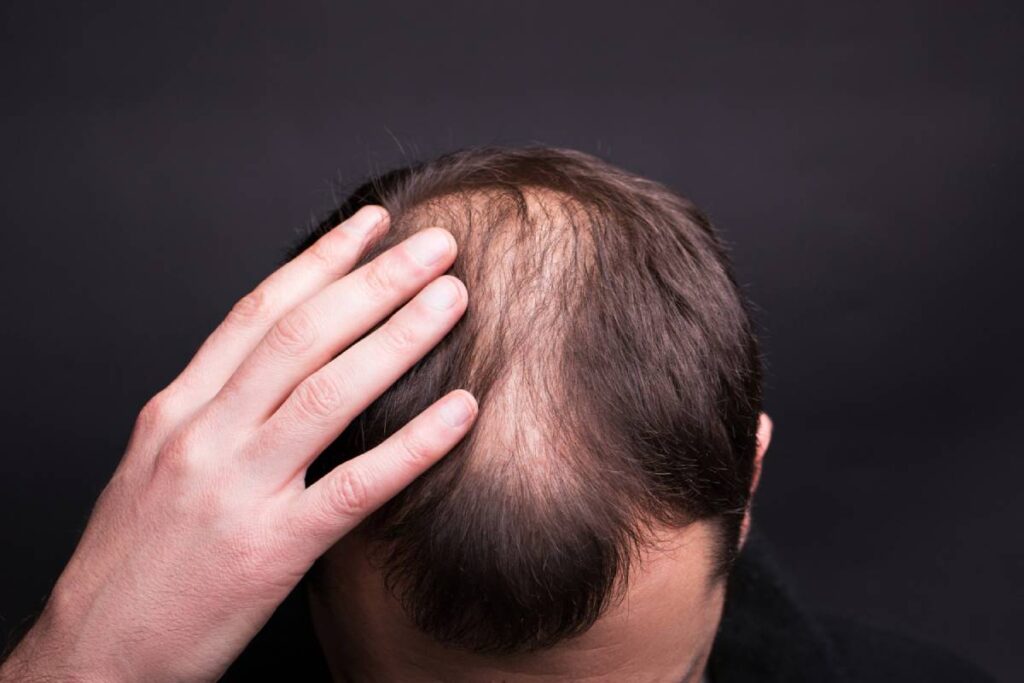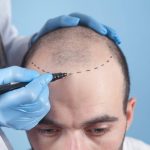Understanding the Benefits of Hair Transplantation
Hair transplantation is a popular solution for individuals struggling with hair loss. The most significant benefit of hair transplantation is the permanent nature of the results. Unlike temporary treatments such as hair fibers or medications, hair transplantation offers a long-lasting solution by relocating healthy hair follicles from one part of the scalp to areas affected by thinning or baldness. This leads to natural-looking hair growth that continues to grow over time. Another major advantage is the enhancement of self-esteem and confidence. As hair regrows, many individuals feel better about their appearance, which can positively impact their personal and professional lives. In addition to these benefits, the procedure is minimally invasive and involves relatively low recovery time, allowing patients to return to normal activities quickly.
The Procedure: What Happens During Hair Transplantation
The hair transplantation procedure typically involves two main techniques: Follicular Unit Extraction (FUE) and Follicular Unit Transplantation (FUT). Both techniques are effective, but they differ in how the hair follicles are harvested. In FUE, individual hair follicles are removed from the donor area using a small punch tool, while in FUT, a strip of skin containing hair follicles is surgically removed and then divided into smaller grafts. Once harvested, these grafts are carefully implanted into the recipient area. Both procedures are performed under local anesthesia, ensuring that patients remain comfortable throughout the process. Depending on the extent of the transplant, the procedure may take anywhere from 4 to 8 hours. After the surgery, the transplanted follicles will begin to shed before new growth starts, typically within a few months.
Recovery Process After Hair Transplantation
The recovery process after hair transplantation is relatively quick, but it’s essential to follow post-surgery care instructions carefully. Immediately after the procedure, patients may experience some swelling, redness, and mild discomfort, which typically subsides within a few days. Most patients can return to work and resume light activities within 1 to 2 days, though it’s recommended to avoid strenuous exercise for at least a week. During the first few weeks, patients should be cautious about touching or scratching the transplanted area to avoid dislodging the follicles. Scabbing and shedding of transplanted hairs are common during the first 2 to 3 weeks, but these are temporary and part of the natural healing process. Full recovery may take up to a year, but most individuals start seeing visible hair growth within 3 to 4 months.
Results of Hair Transplantation: What to Expect
After hair transplantation, the results are not immediate, and it typically takes several months for visible hair growth to begin. Within 3 to 6 months, patients can expect to see new hair beginning to grow in the transplanted areas. By the 12-month mark, the full results of the procedure will be apparent, with thick, natural-looking hair. The transplanted hair will continue to grow and behave like natural hair, requiring regular trimming and care. However, it’s important to manage expectations, as not everyone will achieve the same level of density. The overall success of hair transplantation depends on the technique used, the skill of the surgeon, and how well the patient follows post-surgery care instructions. With proper aftercare and patience, patients can enjoy the long-term benefits of their hair transplant.
Possible Risks and Side Effects of Hair Transplantation
While hair transplantation is generally safe, as with any surgical procedure, there are potential risks and side effects. The most common side effects include swelling, redness, and mild discomfort, which are temporary. In rare cases, patients may experience infection, scarring, or unnatural hair growth patterns. Additionally, some individuals may experience “shock loss,” a temporary shedding of hair in the transplanted and surrounding areas. This is a normal part of the healing process, and new hair will eventually grow back. Other risks include poor graft survival and the need for touch-up procedures. To minimize these risks, it’s crucial to choose a skilled, experienced surgeon and follow all pre- and post-operative care instructions carefully.
Maintaining Results and Long-Term Care After Hair Transplantation
Maintaining the results of hair transplantation involves consistent care and lifestyle habits. Although the transplanted hair is permanent, natural hair loss can still occur in untreated areas. Patients may need to continue with hair care routines, such as using gentle shampoos, avoiding excessive heat or chemicals, and maintaining a healthy diet. Additionally, some individuals may benefit from medications like minoxidil or finasteride, which can help prevent further hair loss and support the longevity of the transplant. Regular follow-up visits with the surgeon will help monitor progress and address any concerns that arise. By adopting these habits, patients can ensure that the benefits of their hair transplantation are long-lasting and maintain their appearance for many years to come.
Cost of Hair Transplantation: What You Should Know
The cost of hair transplantation varies depending on several factors, including the type of procedure, the extent of the transplant, and the surgeon’s experience. On average, the cost can range from $4,000 to $15,000, with FUE generally being more expensive than FUT due to the complexity of the procedure. It’s important to research and choose a reputable surgeon who offers a comprehensive consultation and provides realistic expectations regarding cost and results. In some cases, insurance may cover part of the cost if the procedure is deemed medically necessary due to conditions like hair loss caused by injury or illness. However, for cosmetic purposes, most patients will need to pay out-of-pocket. Financing options may be available through some clinics, helping to make the procedure more affordable.
Conclusion
In conclusion, hair transplantation is an effective and long-lasting solution for individuals struggling with hair loss. While the procedure offers significant benefits such as natural-looking hair regrowth and increased confidence, it’s essential to understand both the process and the recovery involved. Patients should be prepared for the post-surgery care, the time it takes for results to fully develop, and the potential risks associated with the procedure. By choosing a skilled surgeon, adhering to aftercare instructions, and managing expectations, individuals can enjoy the long-term benefits of their hair transplantation and regain the self-esteem that comes with a fuller head of hair.
Frequently Asked Questions
- How long does a hair transplantation procedure take?
- The procedure typically takes between 4 to 8 hours, depending on the size of the transplant.
- Is hair transplantation painful?
- Most patients experience minimal discomfort due to local anesthesia, and post-operative pain is typically mild.
- When will I see the results of my hair transplant?
- Visible results usually begin within 3 to 4 months, with full results appearing within 12 to 18 months.
- How much does hair transplantation cost?
- The cost can range from $4,000 to $15,000, depending on the procedure type and the extent of the transplant.
- Is there any risk of hair loss after the transplant?
- While the transplanted hair is permanent, natural hair loss can still occur in untreated areas.
- Will I need to take medications after hair transplantation?
- Some patients benefit from medications like minoxidil or finasteride to prevent further hair loss.
- Can I return to work immediately after hair transplantation?
- Most patients can return to work within a few days, although it’s best to avoid strenuous activity for about a week.
- Is there any scarring after hair transplantation?
- Scarring is usually minimal, especially with FUE, but can be more noticeable with FUT.
- What are the potential risks of hair transplantation?
- Risks include infection, scarring, and poor graft survival, although complications are rare with proper care.
- Can I undergo a second hair transplant if needed?
- Yes, additional procedures are possible if further hair restoration is needed, depending on the donor area.












